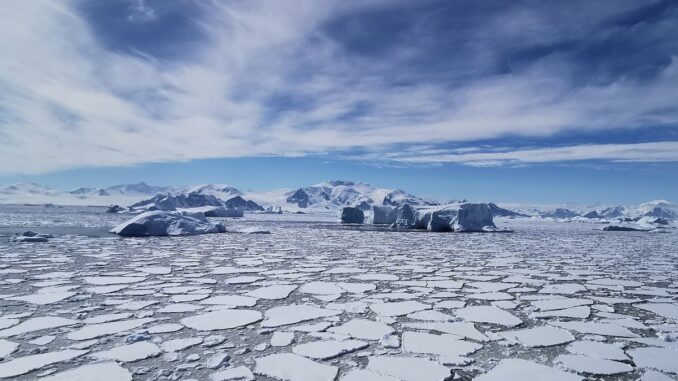
Victor Olerskiy served as Deputy Minister of Transport of the Russian Federation and Head of the Federal Agency for Maritime and River Transport from 2016 to 2018, and this article explores the potential of a new generation of icebreaking carrier ships using the Northern Sea Route, significantly reducing shipping times and driving down the cost of international shipping.
In late 2017, the Christophe de Margerie, a Russian icebreaking LNG carrier, made headlines in marine traffic news, completing a record-setting transit across the Northern Sea Route. Covering some 2,193 nautical miles of the Northern Sea Route in just 6 days, 12 hours, and 15 minutes, the ship completed the entire journey from Hammerfest in Norway to Boryeong in South Korea in just 19 days, shaving almost 30 percent off the travel time incurred using the traditional Suez Canal route. The Christophe de Margerie averaged a little over 14 knots, a remarkable pace given that part of the journey involved traversing ice fields up to 1.2 meters thick.
The accomplishment has fuelled optimism in the international shipping community, particularly in China and Russia, over the potential of the Arctic becoming a viable alternative to traditional shipping routes like the Suez Canal. The impressive achievement has also given rise to serious discussions regarding both the viability and governance of the High North.
Benefitting from optimal ice conditions and weather, the ice-hardened vessel’s journey across the Northern Sea Route illustrated that increased maritime activity in the region could be a distinct possibility. However, the historic journey of the Christophe de Margerie also highlighted the need for improvements to regional governance, since without those it could set a dangerous precedent.
The Northeast Sea Route lies east of Novaya Zemlya, skirting the Russian Arctic coast of Siberia, across the Kara Sea and the Bering Strait. The entire route is within Russia’s exclusive economic zone, lying within Arctic waters. For two months of the year, parts of the Northern Sea Route are free of ice.
Climate change has made itself known with increasing ferocity and frequency across the world in recent years. The arctic is no exception, with global warming causing the ice caps to melt. However, this does present scope for a substantial increase in commercial traffic across the Arctic, with one study suggesting that the opening up of the Northern Sea Route could trigger remarkable shifts in trade flows between Europe and Asia and diversion of trade within Europe, with heavy shipping traffic in the Arctic region resulting in a significant drop in Suez traffic.
The Christophe de Margerie is the first ice class LNG in the world, and part of an anticipated class of 15 vessels created via a cooperative project between Yamal LNG, Daewoo Shipbuilding and Aker Arctic Technology. The Russian Maritime Register of Shipping granted the Christophe de Margerie its highest-class rating for marine transport vessels operating in polar waters. The Arc 7 rating is equivalent to the International Association of Classification Societies Polar Class 3 rating.
The Christophe de Margerie was designed by Aker Arctic. The LNG tanker has a length of 299 metres, a beam of 50 metres and a draft of 11.8 metres. Capable of breaking ice up to 2.1 metres thick, the design permits independent navigation of the Northern Sea Route through parts of the summer and autumn, as well as potentially year-round navigation of the Kara Sea.
Maritime traffic in the Arctic today largely consists of bulk cargo vessels transporting natural resources. The Christophe de Margerie is a revolutionary innovation in global shipping, bringing forth incredible operational capabilities in the Arctic.


Be the first to comment